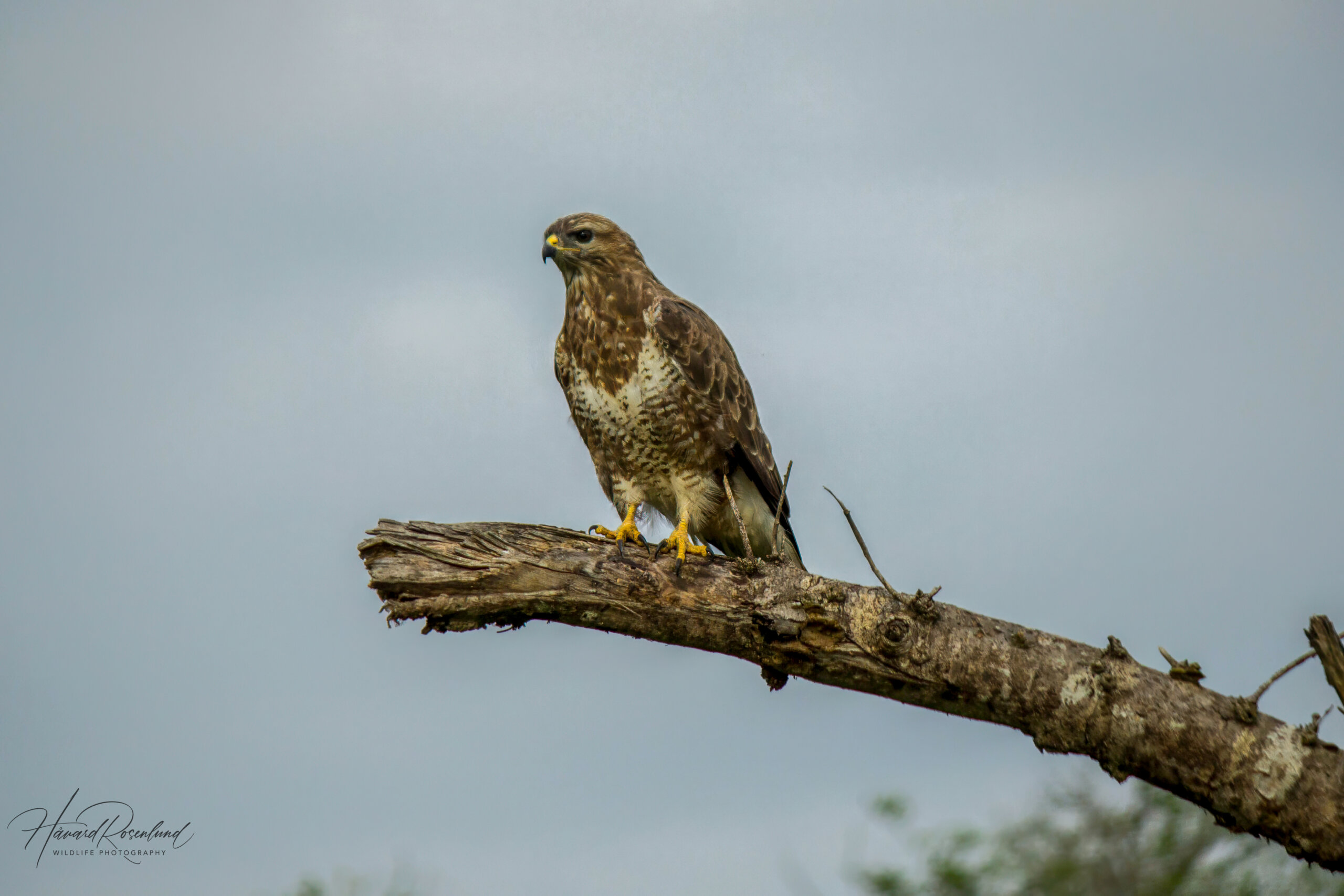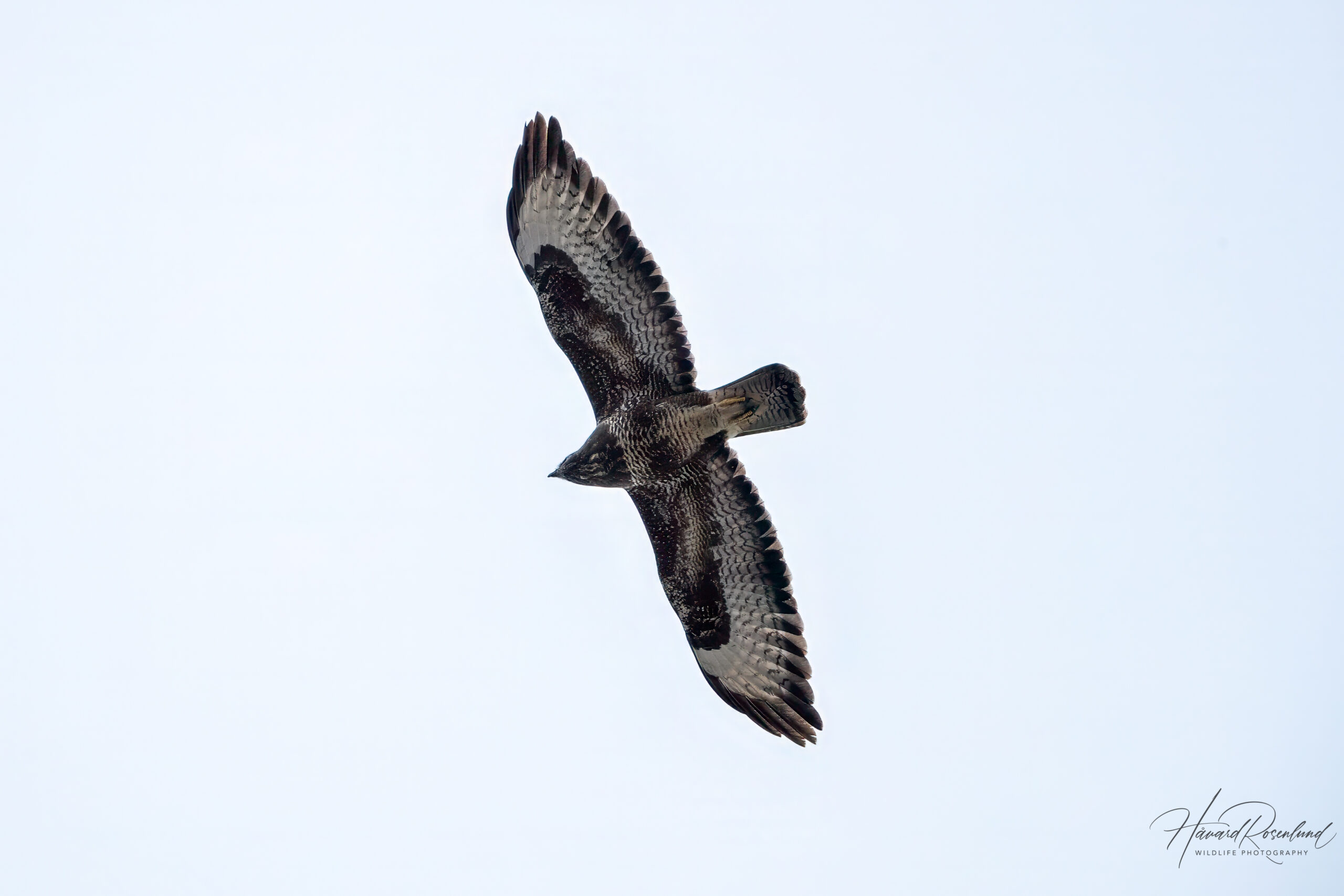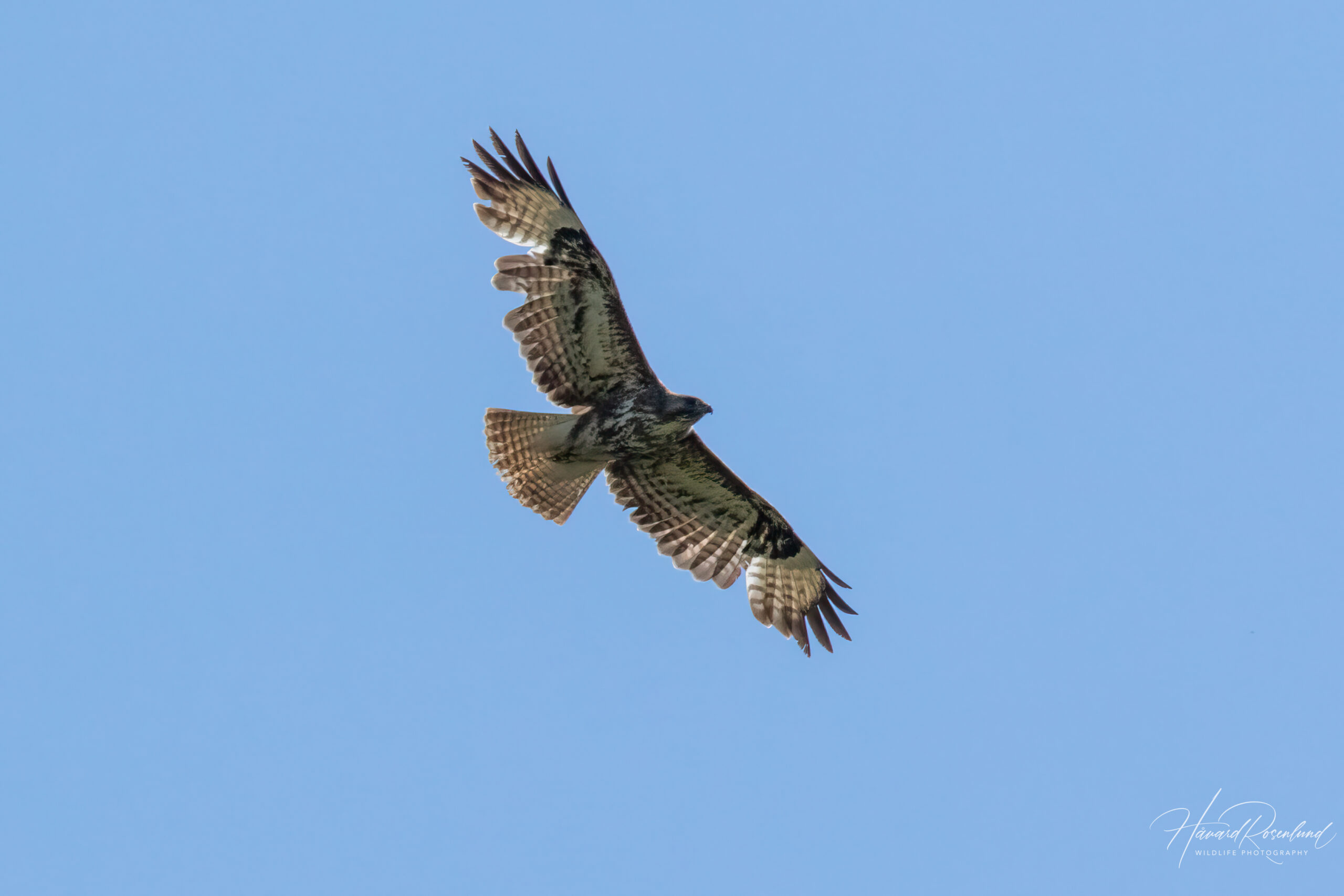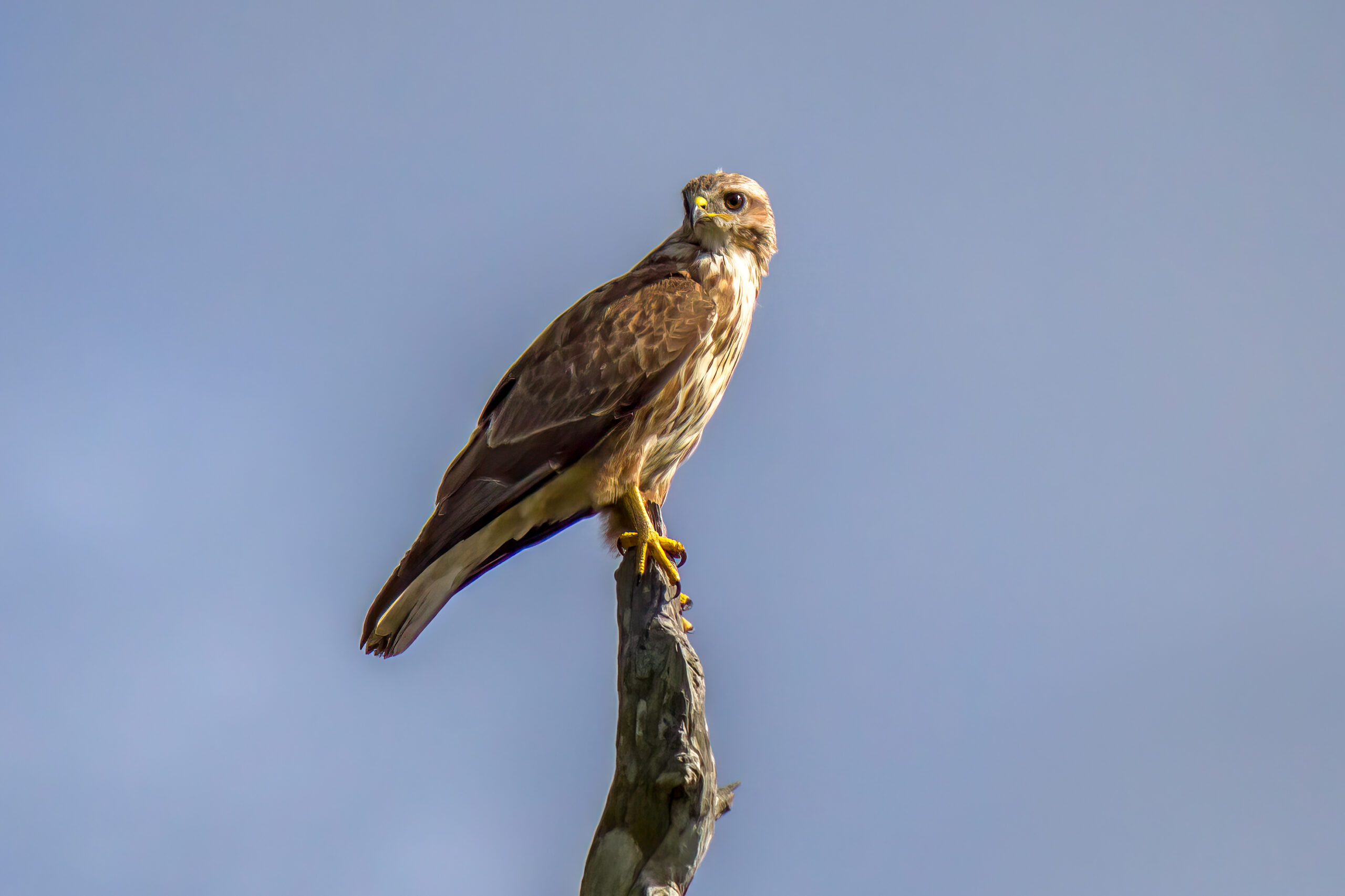Description
The common buzzard (Buteo buteo), also known as Eurasian buzzard, is a medium-sized bird of prey with a range extending across Europe and into parts of Asia. It is one of the most widespread raptors in its territory. The species is known for its robust build, with an average size of 45 to 57 cm (18 to 22 inches) in length, and a broad wingspan of approximately 113 to 128 cm (44 to 50 inches). Males and females generally exhibit similar plumage patterns, though females can be slightly larger. Adult buzzards feature a variation of colors from light to dark brown, with a barred tail and underwing. Juveniles tend to have paler plumage with a more streaked appearance. Its rounded wings and short, banded tail when in flight, make it distinguishable from other raptor species. The steppe buzzard (Buteo buteo vulpinus), a distinct subspecies of the common buzzard found in the eastern parts of its range, can be read about in more detail here.
Diet & habitat
Common buzzards are versatile feeders, with diets that can include small mammals, birds, insects, and earthworms. This diet flexibility allows them to adapt to various habitats, including woodlands, farmland, and moors. They are often seen soaring in the sky, utilizing thermal currents to glide while scanning the ground for potential prey. Buzzards also perch conspicuously on trees, poles, and other high vantage points to spot food.
Migration
The migration habits of common buzzards vary geographically. While some populations are sedentary, others, particularly those from the colder regions of their range, migrate southwards during winter. These migratory movements are primarily seen in the populations breeding in the eastern and northernmost parts of their range, seeking milder climates during the cold months. Most of the European populations, upwards to southern Sweden, stay in their territory year-round, whereas migrating populations leave for warmer climates in September-October, and return to their breeding grounds in late March to April. The steppe buzzard subspecies is completely migratory, spending its winters in East and Southern Africa (and some in southern India).
Nesting
Breeding season for common buzzards occurs in the spring when males perform impressive aerial displays to attract mates. They are monogamous birds that often return to the same nesting site year after year. Nests are typically constructed high in trees using twigs and lined with softer materials, but they can also be places on cliff ledges and other structures. Females lay between 2 to 4 eggs, which are incubated by both parents for about 33 to 38 days. The chicks fledge roughly 42 to 60 days post-hatching but remain dependent on their parents for several weeks thereafter. Throughout this period, the parents are highly protective, ensuring their offspring get to develop the necessary skills for survival and potential migration.
Status
The common buzzard is classified as least concern on the IUCN Red list, reflecting its widespread distribution and large population size. Despite facing threats from habitat destruction and persecution in some areas, their numbers have remained stable or have increased in much of their range due to legal protection and habitat management efforts.











